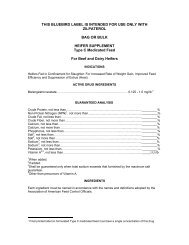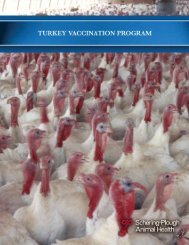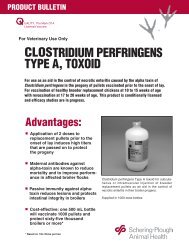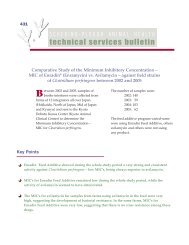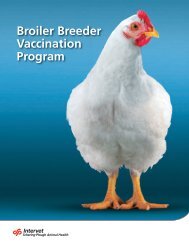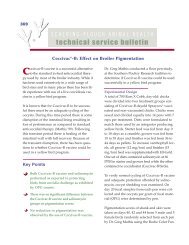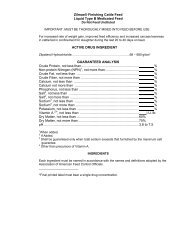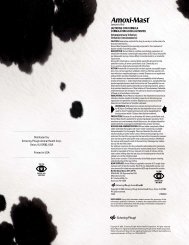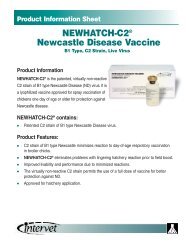Ralgro Detailer - Merck Animal Health
Ralgro Detailer - Merck Animal Health
Ralgro Detailer - Merck Animal Health
- No tags were found...
Create successful ePaper yourself
Turn your PDF publications into a flip-book with our unique Google optimized e-Paper software.
<strong>Ralgro</strong>: The Inside TruthNot everyone understands the science behind implants.Since confusion can often lead to mismanagement andpoor results, <strong>Ralgro</strong> encourages transparency aboutthese products. Here are the leading misconceptionsof implant use, and the truths behind them.1.2.“There is no perceived benefit to implants.”TRUTH:A lack of perceived benefits mostly stems from alack of forage nutrients. Lean growth has a higherpriority than fat, resulting in higher initial nutrientdemand. Without proper forage, marbling, fat andoverall output can suffer.The research is clear. Hundreds of implant studieshave been conducted on stocker cattle, indicatinga response of 15-20% increase in ADG, regardlessof basal rate of gain.“Hormonal implants are unnatural.”TRUTH:<strong>Ralgro</strong> implants stimulate the production ofsomatotropin, a natural growth-producing agent.In steers, these hormones are lost during castration.Nothing is produced in the animal that does notoccur naturally.These hormone messages optimize nutrientdemands to lean tissue over external fat to createresults naturally found in larger frame scorebulls and heifers. For example, a frame eightsteer will finish about 200 pounds heavier thana frame five steer, simply because it has highermessenger hormones.3.The change to the animal’s growth curve is basedon three factors: age, genetics, and caloric intake.For implants to be effective and produce results,these factors must be established first.“Implanted calves don’t benefit as muchfrom subsequent implants.”TRUTH:<strong>Ralgro</strong> implants have no effect on an animal’sresponse to succeeding hormone enhancements.<strong>Ralgro</strong> optimizes smaller-framed steers in relationto their age. Pre-harvest growth enhancements willwork just as they would in non-implanted steers.4. “Implants cost too much.”TRUTH:Weaning weights of both steer and heifer calveshave been increased as much as 20-35 poundscompared to non-implanted cattle. This weightgain typically exceeds the “premiums” oftenattributed to implant-free calves.In fact, few technologies have the potential returnon investment as growth-promoting implants.As long as they are properly managed, implantshave a proven return on investment.As demand for high quality beef continues torise, proper implanting methods will only becomemore important.



